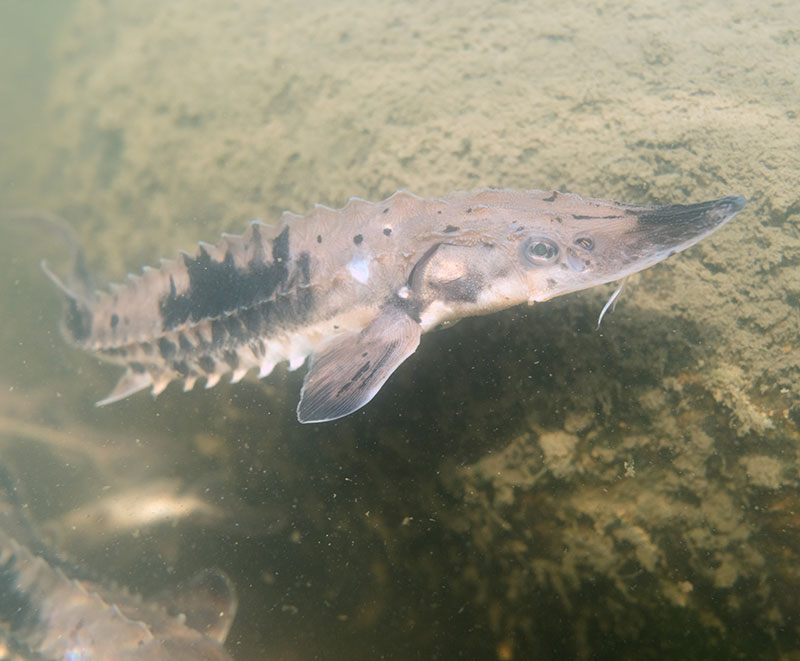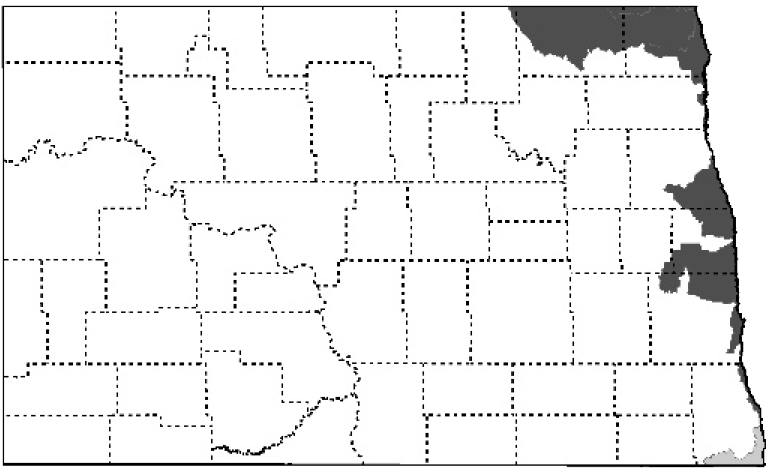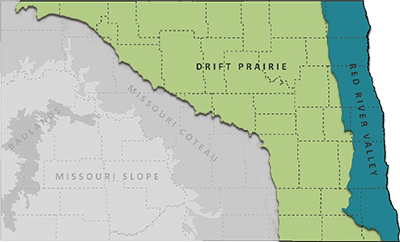Lake Sturgeon

Photo Credit
NDGF
SGCN
Nongame
Common Name
Lake Sturgeon
Scientific Name
Acipenser fulvescens
Taxon
Fishes
Subtaxon or Group
Sturgeon
Description
The lake sturgeon is torpedo-shaped primitive fish with a cartilaginous skeleton. It has five rows of large bony plates called scutes on its body. It has a flattened snout with barbels and a protractive mouth. Typically, adult lake sturgeon grow to about 4-6 feet long, weigh 30- 80 pounds, and live to be 50-100 years old.
Status in North Dakota
No federal Designation. Was petitioned but not warranted in 2023.
Reason for SWAP Designation
Regionally or Globally Imperiled.
NDGF fisheries staff recently reintroduced lake sturgeon to the Pembina River.
Threats
River barriers reduce access to spawning and rearing habitat.
Research and Monitoring
- The states rivers and streams are surveyed for species on a 5-year rotating schedule.
- North Dakota DEQ staff survey rivers and streams through their Index of Biotic Integrity program.
- Lake Sturgeon were reintroduced into the Pembina River in 2023
- All reintroduced fish were marked with PIT tags for monitoring.
- The Pembina River is surveyed for all species 5-year rotation.
- MN DNR has been stocking Lake Sturgeon into the Red River of the North and its MN tributaries since 1997.
Management Recommendations
- Continue to use the Section 404 program to ensures affected rivers and riparian areas are mitigated to replace form and function.
- Continue to work with other federal agencies not covered by 404 to ensure affected rivers and riparian areas are mitigated to replace form and function.
- Continue to work with NDSWC to develop instream flow recommendations.
- Promote incentive programs to restore riparian areas.
- Continue to work with ND 319 Task Force in prioritizing projects within impaired watersheds and implementing BMPs.
- Implement intake conditions or recommendations.
- Cooperate with NDGFD Fisheries staff on state aquatic nuisance species plans.
- Removal of dams and other barriers.
- Retrofitting dams with fish passage structures.
- Reintroduction into historic drainages of the Red River.
- Regulated Harvest.



